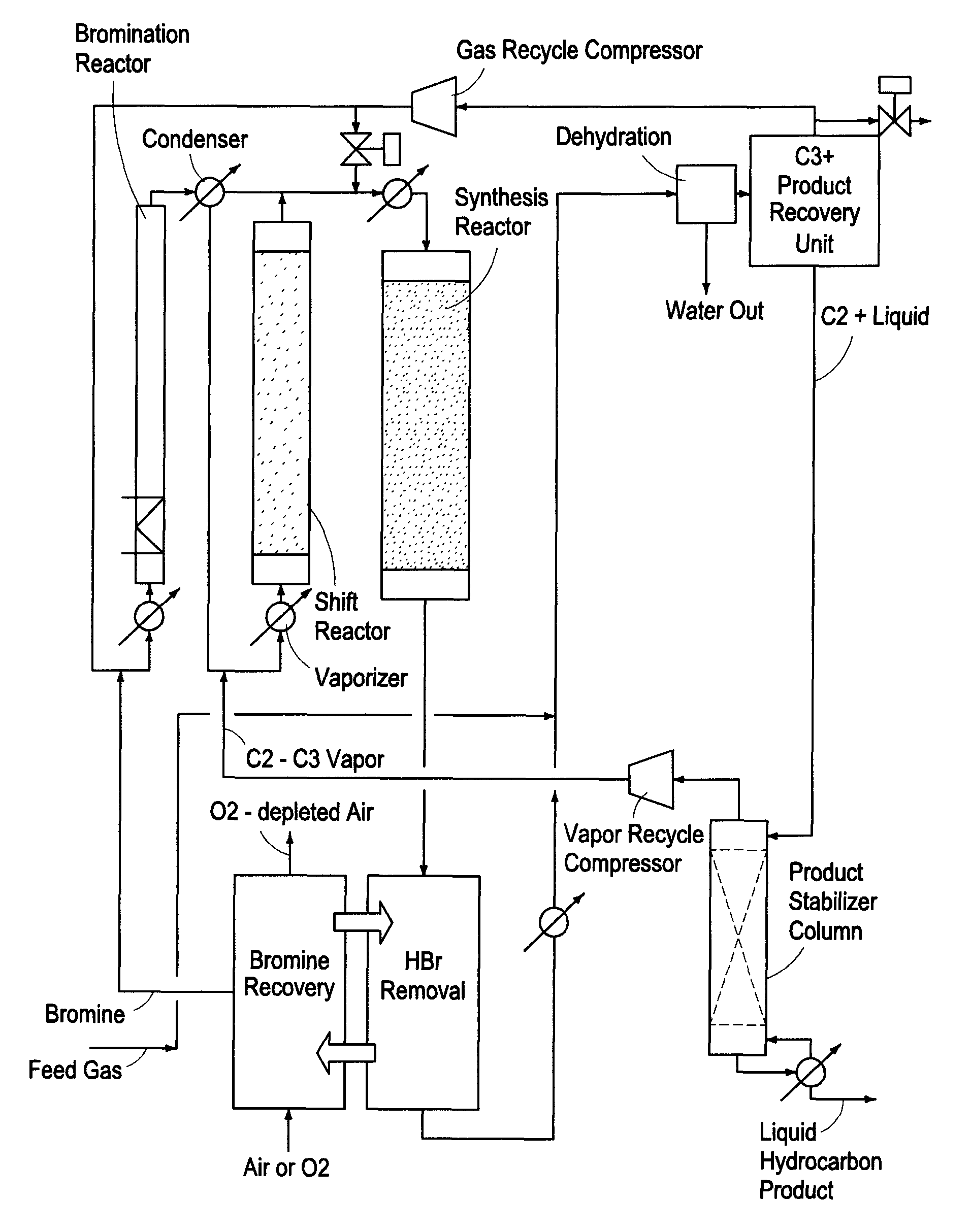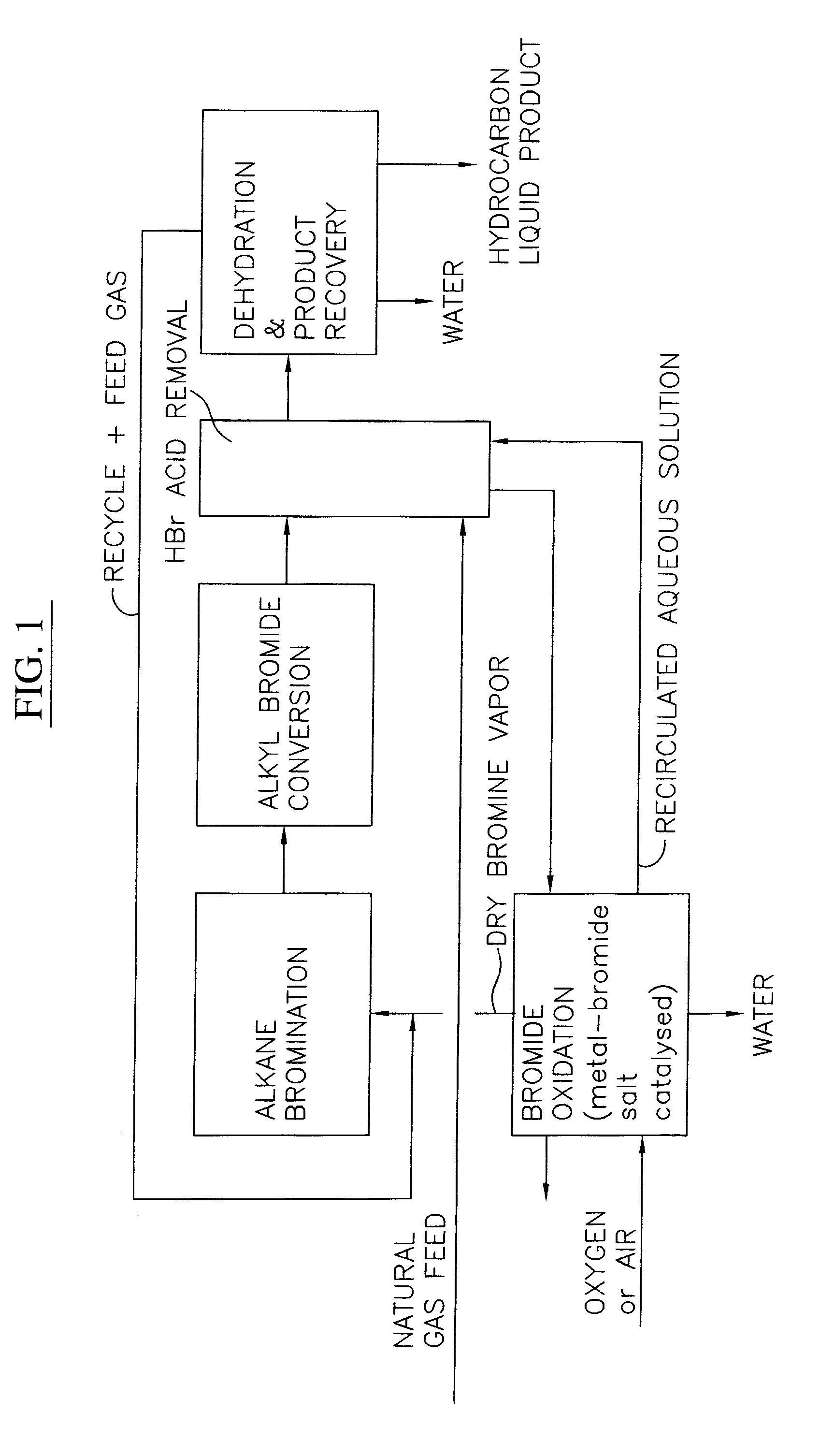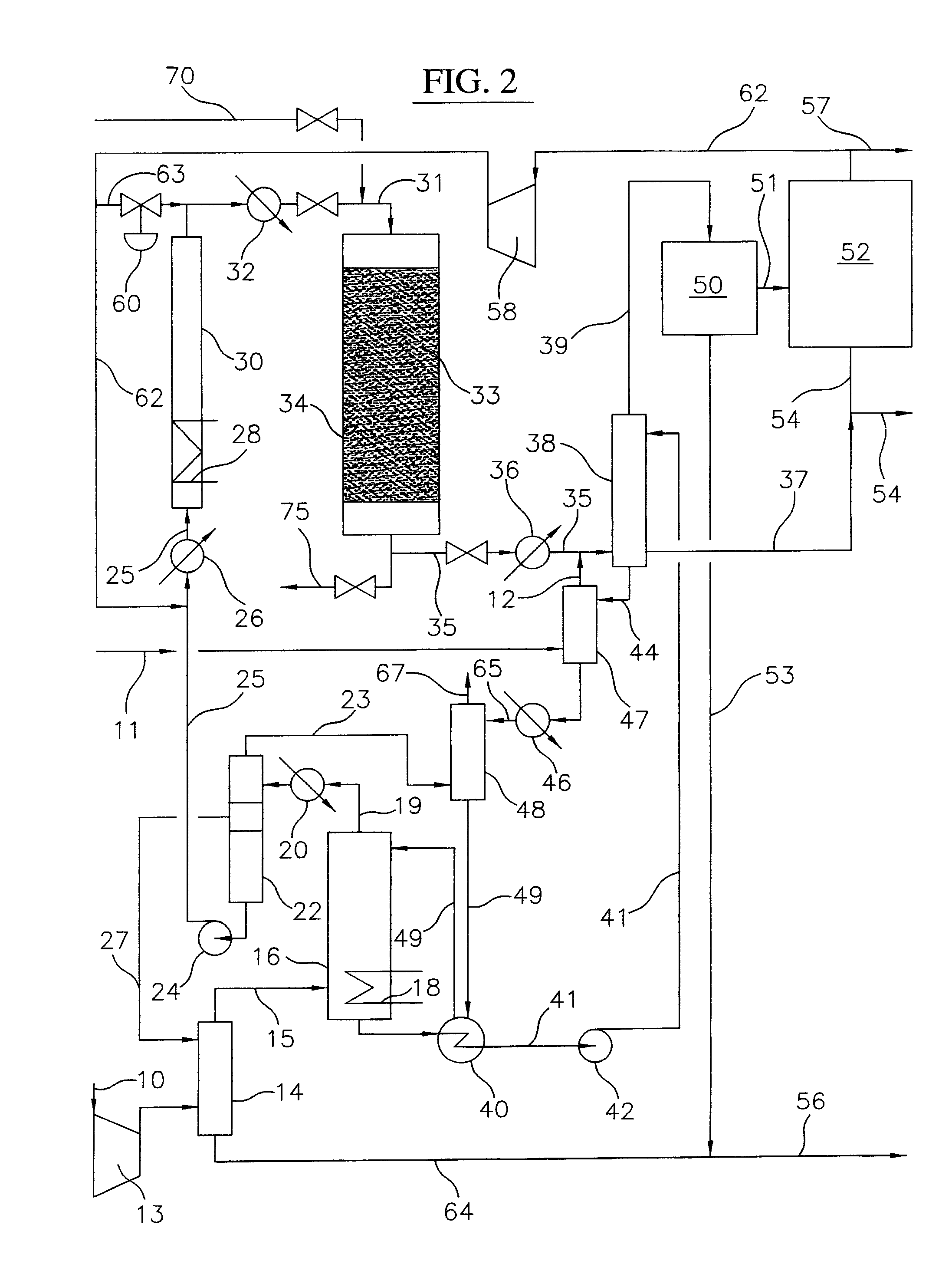Processes for converting gaseous alkanes to liquid hydrocarbons
a technology of gaseous alkanes and liquid hydrocarbons, which is applied in the field of process of converting lower molecular weight alkanes to olefins and higher molecular weight hydrocarbons, can solve the problems of high cost of lng process, limited distance over which natural gas may be transported, and high cost of gaseous transportation
- Summary
- Abstract
- Description
- Claims
- Application Information
AI Technical Summary
Benefits of technology
Problems solved by technology
Method used
Image
Examples
example 1
[0145]A mixture of methane and vaporized bromine at various mixture ratios is flowed vertically upward through a un-packed tubular reactor which is externally heated in three zones using electrical heating elements. The top (outlet) zone is maintained at an average temperature of about 494° C., the middle zone is maintained at an average temperature of about 450° C. and the inlet (preheat) zone is operated at various temperatures over the range of about 150° C. to about 300° C. Reaction residence times ranged from about 2.0 to 4.5 seconds. As depicted in FIG. 14, increasing the molar ratio of methane to bromine introduced into the bromination reactor above 2.5 results in a significant increase in monobromination selectivity of approximately 70%. At molar ratios of methane to bromine of about 5, monobromination selectivity averages about 80%, while at molar ratios of methane to bromine of about 10, monobromination selectivity exceeds 80%. As further depicted in FIG. 15, this increase...
example 2
[0146]An externally heated open-tube (nominal ⅜-inch diameter) laboratory-scale thermal bromination reactor (R-1a) is operated upstream in series with a nominal 1-inch diameter catalytic shift reactor (R-1b) operating at about 490° C. and a GHSV of about 650° hr−1, according to the invention. Flows of methane, bromine and nitrogen are controlled to target feed CH4:Br2 ratios of either 3:1 or 2:1 to the first open-tube thermal bromination reactor. For each of the two targeted CH4:Br2 feed ratio mixtures the first open tubular thermal bromination reactor is heated (with a three-zone temperature profile from the bottom inlet to the top outlet at 425° C., 450° C. and 470° C.) to initiate the thermal gas-phase free-radical bromination reaction in the open tube thermal reactor. The compositions of samples of the inlet and outlet gases to the Catalytic Shift Reactor are shown in the table below for the two different target methane-bromine mixtures. When the thermal bromination is initiated...
example 3
[0149]An externally heated laboratory-scale catalytic shift reactor (nominal 1-inch diameter) is operated at about 490° C. and a GHSV of about 650 hr−1, according to the invention. Flows of methane, bromine and nitrogen are controlled to target feed CH4:Br2 ratios of 3:1 and are preheated to about 175° C. in the first open tube thermal bromination reactor (R-1a) and fed to the catalytic shift reactor (R-1b).
[0150]The catalyst was initially composed of a mixture of iron oxide and molybdenum oxide dispersed on a silica support, prepared using a wet precursor impregnation / post calcination method. Prior to each test the catalyst is maintained at a temperature of about 490° C. and calcinated / regenerated with a mixture of oxygen and nitrogen for several hours to insure that the catalyst was in an initial oxide form, then purged with N2, prior to the introduction of the methane-bromine reactants. As illustrated in FIG. 20, the amount of CH3Br (MeBr) increases with time for approximately th...
PUM
| Property | Measurement | Unit |
|---|---|---|
| temperature | aaaaa | aaaaa |
| temperature | aaaaa | aaaaa |
| temperature | aaaaa | aaaaa |
Abstract
Description
Claims
Application Information
 Login to View More
Login to View More - R&D
- Intellectual Property
- Life Sciences
- Materials
- Tech Scout
- Unparalleled Data Quality
- Higher Quality Content
- 60% Fewer Hallucinations
Browse by: Latest US Patents, China's latest patents, Technical Efficacy Thesaurus, Application Domain, Technology Topic, Popular Technical Reports.
© 2025 PatSnap. All rights reserved.Legal|Privacy policy|Modern Slavery Act Transparency Statement|Sitemap|About US| Contact US: help@patsnap.com



